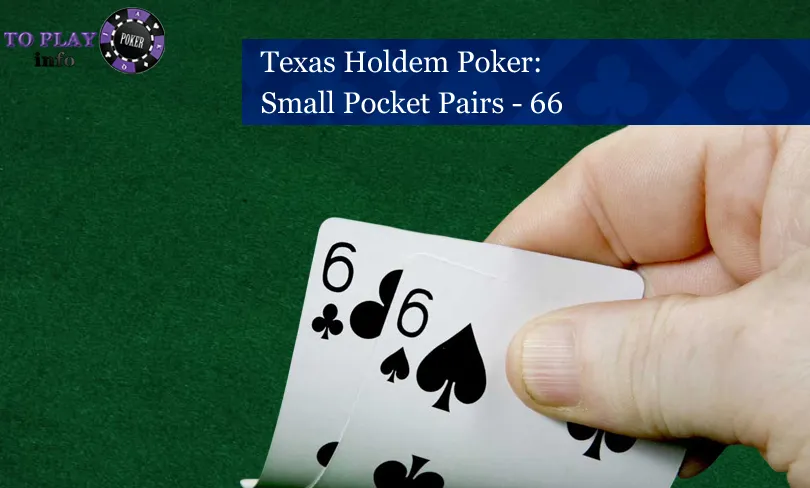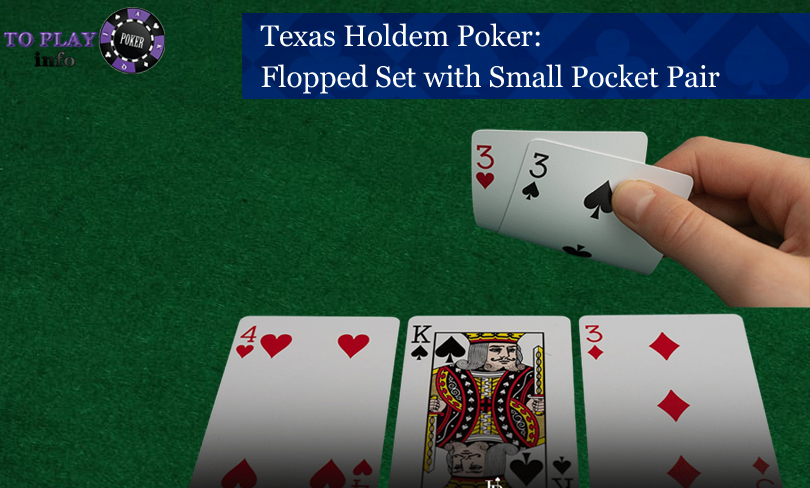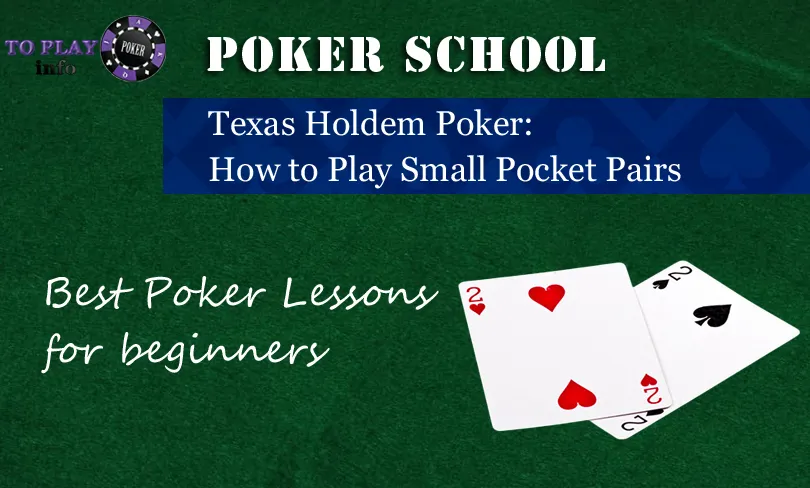Small pocket pairs (22 to 66) can look deceptively strong preflop. But unless played with precision, these low pairs may lead to trouble. In this guide, we’ll show you how to get the most value from them while avoiding common pitfalls.

Table of Contents
- Main Weaknesses of Pocket Pair
- Low Pocket Pairs and Set Potential
- Set Odds and Math
- Set Strategy
- Implied Odds
- Flopped Set Strategy
- FAQ
- Where to Practice
- Conclusion
The Main Problem with Small Pocket Pair
When you’re holding a low pair like 33 or 55, most flops will contain overcards. This makes it hard to know where you stand postflop.
“A simple bet and call on the flop won’t reveal much. Continuing on later streets just to ‘find out where you’re at’ can get expensive.”
A pocket pair in poker might feel strong preflop, but postflop play requires discipline and planning.
Small Pocket Pairs and Sets
The true power of small pocket pairs lies in their ability to flop a set. A set is when your pocket pair matches one card on the board — very strong and well disguised.
“Sets are extremely strong and disguised hands. Your opponents rarely expect them — and that’s how you win big.”
Set Odds and Math for Low Pocket Pairs
You’ll flop a set roughly 1 in 8 times (or 12%). This means you need implied odds — not just direct odds — to make preflop calls profitable.
“This is where implied odds come in — your expected winnings after hitting the set.”
Set Strategy with Low Pocket Pairs
- Only call when effective stacks are 70BB+
- Avoid calling large raises without deep stacks
Mastering pocket pair poker means knowing when to set-mine and when to fold. Don’t chase sets unless the math works in your favor.
Playing Low Pocket Pairs Against Deep Stacks
The deeper the stacks, the more money you can extract when you hit. That’s what makes set-mining profitable.
Calling Preflop Raises up to 7BB
You can call standard raises (2.5BB–4BB) and even up to 7BB if stacks are deep. Avoid calling vs short stacks or aggressive players.
Aggressive Play
Advanced players may raise small pairs preflop. This builds fold equity and disguises hand strength — but requires solid postflop play.
Implied Odds When Playing Pocket Pair
Always check how much your opponent has behind. Set-mining only makes sense when you expect to get paid big if you hit.
“Short stacks ruin your implied odds. Deep stacks let you win massive pots when you hit.”
Many players overestimate a pocket pair in poker when stack sizes are shallow.
Flopped Set Strategy with Low Pocket Pairs

Once you hit a set, your goal is simple: build the pot while staying disguised. Strategy depends on position and board texture.
Conclusion
Small pairs are profitable when played with discipline. Use them for set-mining, know when to fold, and don’t overplay weak underpairs postflop.
“See the flop as cheaply as possible. Continue only if you hit a set. Fold otherwise.”
Mastering pocket pair poker means understanding both preflop and postflop dynamics.
Understanding how to play low pocket pairs like 22, 33, or 44 can be the difference between profit and loss.
Even the lowest pocket pair in poker has value — but only when played correctly in the right situations.
If you want to learn how to play low pocket pairs effectively, focus on position and implied odds.
FAQ: Playing Low Pocket Pairs
Only when stack depth and odds make it profitable.
Yes, if you’re confident postflop. Otherwise, play them for set value.
Fold unless you can bluff profitably or have additional equity.
Deuce-deuce (22) is the lowest pocket pair. It’s playable for set value in deep-stacked games.
Where to Practice and Improve Your Game
Check out our guides on pocket aces, pocket kings, and ace-king.
Also, check out our guide on semi-bluffing with drawing hands — a great skill to balance your play when you miss a set.
Want to practice what you’ve learned? Try CoinPoker or Tigergaming — trusted rooms to apply your skills.


Facebook Comments